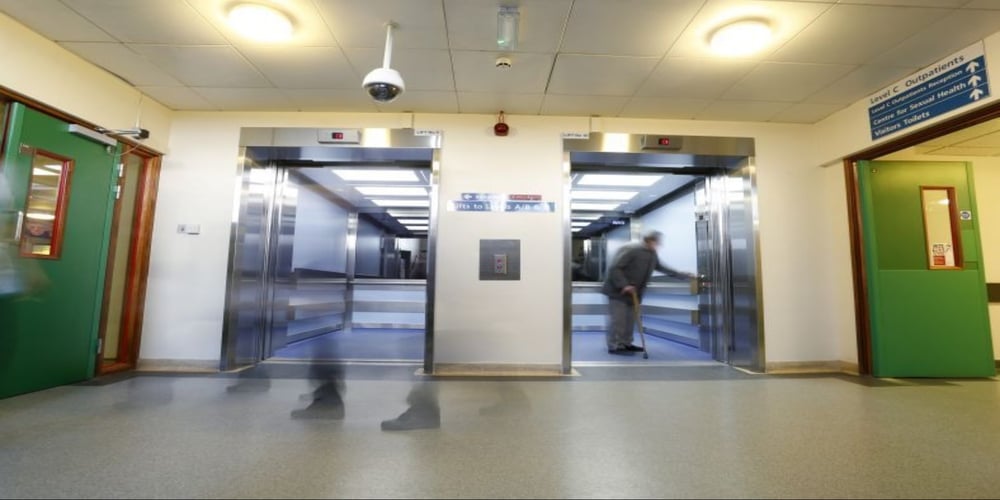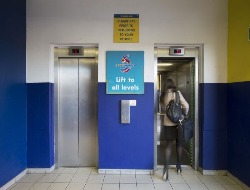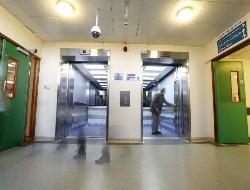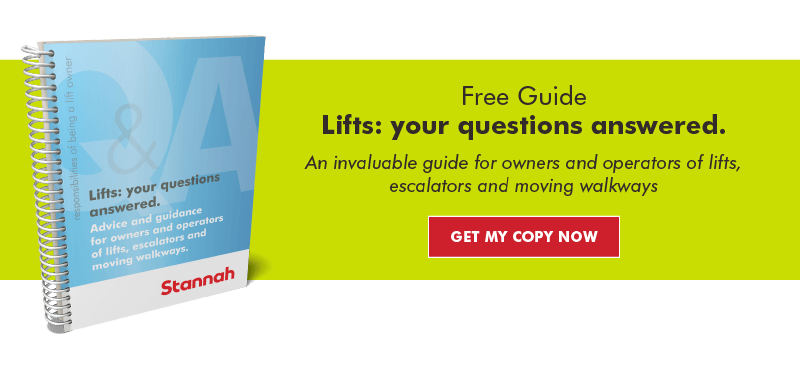BS EN81-80 Lift upgrades for existing lifts

Like technology elsewhere, lifts and lift standards have developed over the years and new safety features have become the norm. In recognition of the fact that lift upgrades are required for improved safety, BS EN 81-80:2003 gives an audit framework for lift modernisation.
In the case of an existing passenger lift installation, it should not be assumed that the equipment complies with all current regulations and/or standards - particularly where equipment is over ten years of age.
Modern lifts have:
-
more guidance around making a lift accessible for passenger, including those with a disability (covered within BS EN 81-82:2013 - Existing lifts. Rules for the improvement of the accessibility of existing lifts for persons including persons with disability)
-
greater landing level-accuracy thereby reducing tripping hazards
-
are fitted with additional lift safety features (e.g. safety gear to stop uncontrolled movement or safety devices to detect obstructions);
Furthermore, to ensure that passengers who may become trapped in the lift, the law since 1999, has required new lifts to be fitted with a two-way communication device (BS EN81-28:2003 - Remote alarm on passenger and goods passenger lifts).
Put simply, today's lift standards have been put in place to make the lift safer for both users and those maintaining and examining it. Every one of these provisions is equally valid for older lifts.
In recognition that lift upgrades are required for improved safety, BS EN 81-80:2003 (Safety rules for the construction and installation of lifts - Existing lifts - Rules for the improvement of safety of existing passenger and goods passenger lifts) was introduced in 2003. With BS EN81-82 and BS EN81-28 following in the latter part of 2003 and 2013.
What is BS EN 81-80?
 BS EN 81-80 is part of the European Standard EN 81 (which covers the upgrading of existing lifts to ensure they are safe to use by all members of the public and those who work on them). This safety standard aims to match the safety levels of existing lifts, with that of brand new lifts, providing a guide to the risk assessment of a lift and subsequent recommendations for how to achieve any improved safety.
BS EN 81-80 is part of the European Standard EN 81 (which covers the upgrading of existing lifts to ensure they are safe to use by all members of the public and those who work on them). This safety standard aims to match the safety levels of existing lifts, with that of brand new lifts, providing a guide to the risk assessment of a lift and subsequent recommendations for how to achieve any improved safety.
The risk assessment is undertaken through a lift survey from a specialist building services consultant or a lift contractor, such as Stannah. The risk assessment helps to identify 74 hazardous situations that could be present on an existing lift. The standard enables each lift to be audited according to the frequency and severity of any single risk, ranging from a high to low risk.
This audit helps to prioritise any lift modernisation work required and also gives an indication of when work is likely to be required, demonstrating a reasonable approach has been made to manage the risk. It also enables lift owners to plan their budgetary provision for safety improvements.
What are some of the adjustments that are likely to be required for the lift?
Adjustments, to improve safety for passengers and engineers may include:
-
Improving floor levelling at each landing
-
Installing a 24-hour two-way communication device
-
Installing a safety device to remove risk to passengers of being struck by closing doors
-
Installing an apron to the lift car sill
-
Ensuring space is available for a lift service engineer to safely work at the top and bottom of your lift shaft
-
Installing permanent effective shaft lighting that illuminates the area for a lift engineer(s) to work in
-
Ensuring a safe means of access is available to the machine room/ cabinet
-
Installing a balustrade on the lift car roof
-
Ensuring the main electric switch for the lift can be locked-off
Once identified, do I need to modernise my lift to meet the requirements fully?
 Yes, you will need to make reasonable adjustments to your existing lift i.e. where practical and you are able to do so, in order to meet current lift standards and regulations. As a lift owner, it is your responsibility to ensure significant hazards (such as those detailed in the BS EN81-80 standard) are addressed.
Yes, you will need to make reasonable adjustments to your existing lift i.e. where practical and you are able to do so, in order to meet current lift standards and regulations. As a lift owner, it is your responsibility to ensure significant hazards (such as those detailed in the BS EN81-80 standard) are addressed.
Conforming to this standard helps lift owners meet their responsibilities under the Provision and Use of Work Equipment Regulations 1998 (PUWER) and Lifting Operations and Lifting Equipment 1998 (LOLER) which are legal requirements.
Summary
It is impossible to predict costs that might arise out of implementing future legislative changes which are not always required to have immediate effect. In order therefore to budget for possible expenditure, it is clearly important that the building maintenance manager is aware of prospective changes at the earliest possible time. It is clearly desirable to take this into account when looking at long term budgeting and servicing arrangements.
Our lift modernisation services keep our customers’ equipment up-to-date using all the latest technologies and meeting all the current standards, without the need for total replacement. We have a wide range of experience from a comprehensive modernisation of lifts on the Docklands Lift Railway, to lift modernisation in multi-storey car parks and sympathetic lift upgrades of 1930s art deco lifts. Take a look at our experience.
How we can help...
As a reputable lift service provider, Stannah can not only provide you with the help and support you need to allow to meet these standards in the quickest and easiest way possible, but can also carry out any refurbishment, replacement or modernisation that an existing lift may require. Take a look at our website to see what we can offer you.
Still unsure? No problem! Get in touch to speak to one of our lift experts or click below to download your FREE guide to lift servicing and maintenance.
With over 50,000 installations across the UK and nearly 100,000 units in our service portfolio, we offer a wide range of lift solutions and services to move people and goods. Take a look at our product range or simply get in touch.
Contact Us


